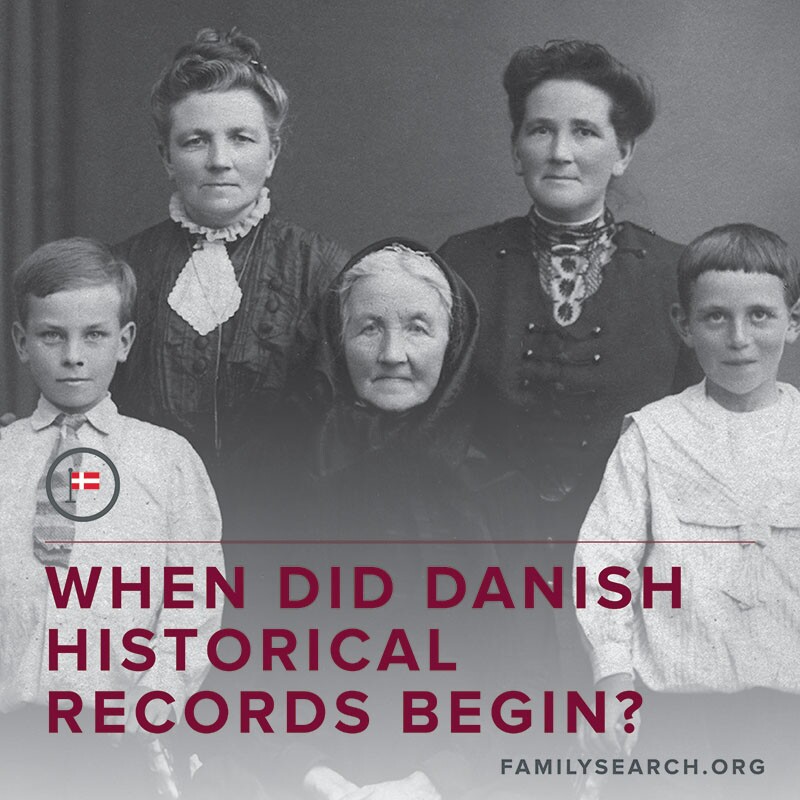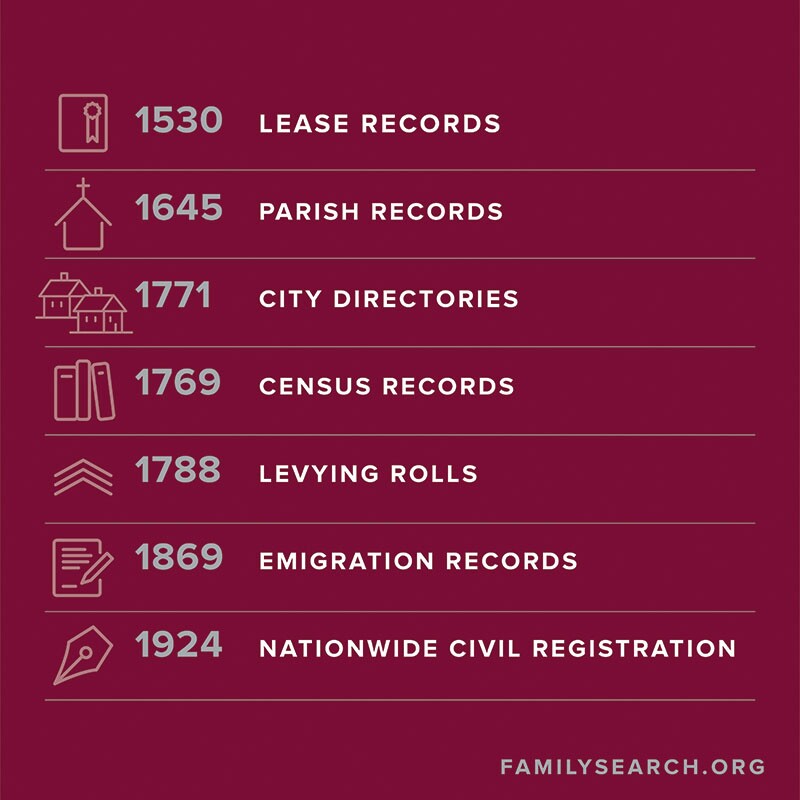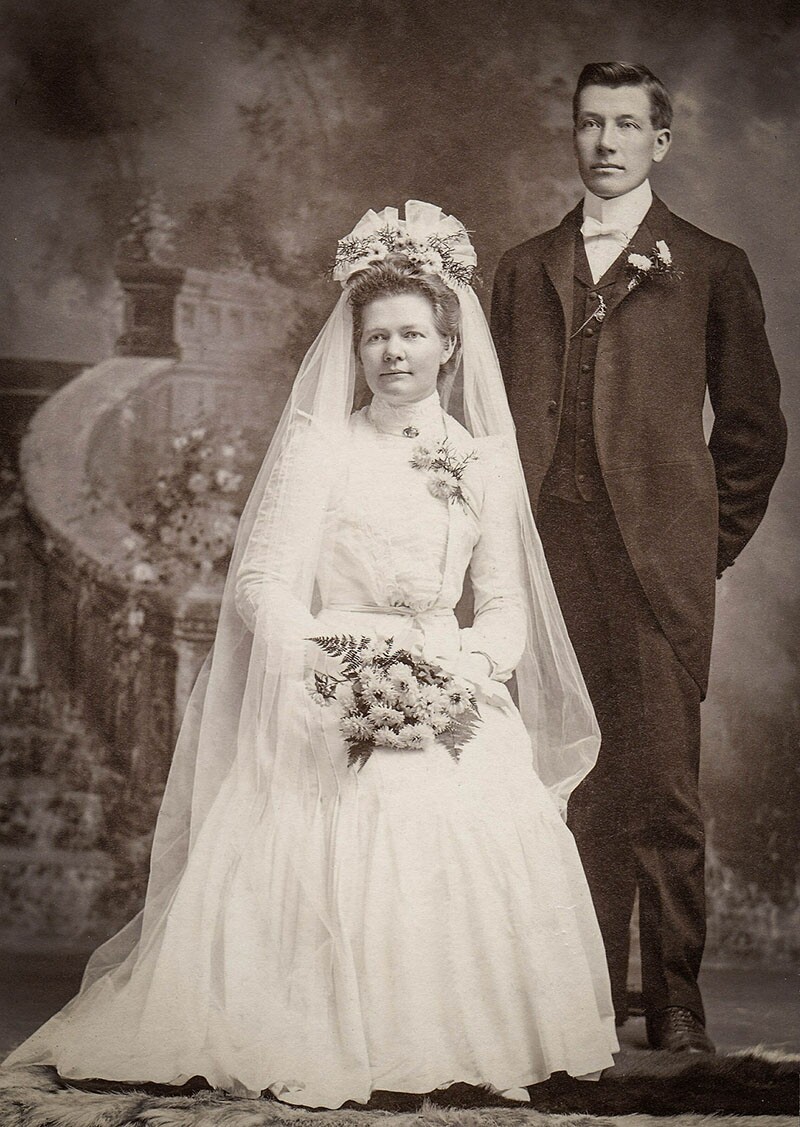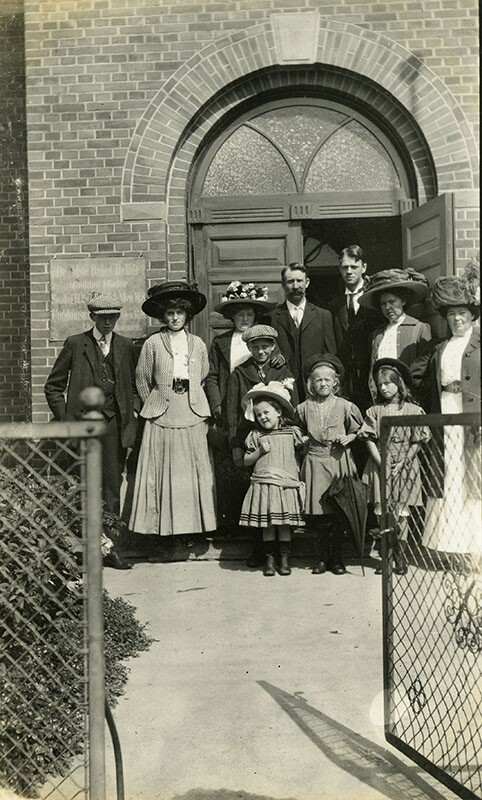Danish records are an excellent resource for family history! While individual situations vary, if you have Danish heritage, it is often possible to extend your family line to the middle of the 17th century.
FamilySearch has an excellent online Danish collection, with millions of images and records. Read on to learn more about what you can find.
A Brief History of Danish Records
On May 30, 1645, King Christian IV decreed that all parishes in eastern Denmark were to record the christenings, marriages, and burials for each person in the parish. The following year, this same requirement was made to apply to the rest of Denmark.
Starting in 1812, it was required that two copies of these records be kept, each in a separate location. Only in the most extreme of circumstances are there no parish records after 1814, when general compliance began.


Danish Birth and Christening Records
Birth and christening records give information about each child born or christened in the parish. In Danish, these are called fødelse og dåb optegnelser.
Information you can find in these records includes the following:
- Name of the child
- Name of the father
- Name of the mother
- The family’s residence
- Names of the godparents
After 1814, the name of the mother was always listed. Before 1814,often only the name of the father was included.
Learn more about Danish birth and christening records.
Danish Confirmation Records
Confirmation records were made of each person who was confirmed a member of the Danish church. Confirmation first became required in 1736 and typically took place when a person was between the ages of 14–19. These records are a middle record between birth and marriage and help establish residency. In Danish, confirmation records are called konfirmations optegnelser.
Information you can find in these records includes the following:
- Name of the teenager
- Age of the teenager
- Name of the father
- Name of the mother (after 1814)
Learn more about Danish confirmation records.
Danish Engagement and Marriage Records

Engagement and marriage records are records of each bride and groom who were engaged or married in the parish. In Danish, these records are called trolovelse og vielser optegnelser.
Information you can find in these records includes the following:
- Names of the bride and groom
- Date of the engagement
- Date of the wedding
- Residence of the bride and groom
- Age of the bride and groom
Learn more about Danish engagement and marriage records.
Danish Moving-In and Moving-Out Records
Starting in 1814, priests also recorded information about people who moved in and out of their parishes. These records are wonderful for tracking a family over time! Often these records continue until1875. In Danish, these records are called tilgangs-lister og afgangs-lister.
Information you can find in these records includes the following:
- Name
- Age
- Place moving to or from in the other parish
- Date of the move
Learn more about Danish moving-in and moving-out records.
Danish Death and Burial Records

Death and burial records give information about each person who died or was buried in the parish. In Danish,these records are called døde og begravelser optegnelser.
Information you can find in these records includes the following:
- Name of the deceased
- Name of the person’s father or husband
- Date of death
- Date of burial
- Place of residence
- Age at the time of death
- Cause of death
Prior to 1814, death and burial records might refer to women only by their husband's name and might give only the date of burial rather than the date of death.
Learn more about Danish death and burial records.
Danish Census Records
In addition to parish records, Denmark also kept excellent census records. The first national census was taken in 1769, but only fragments survive. The second census was in 1787, and all censuses from this point on contain wonderful information to help you find your family.
Information you can find in these records includes the following:
- Name
- Age
- Relationship to the head of the household
- Parish of birth (after 1845)
Learn more about Danish census records.
Now that you’ve learned about Denmark’s records, search FamilySearch’s Danish record collections, and find your family—hopefully you’ll learn something new!
If you are interested in learning about more Danish records you can use for research, check out the RootsTech videos below about Denmark tax and probate records.
Discover More about Your Danish Heritage
At FamilySearch, we care about connecting you with your family, and we provide fun discovery experiences and family history services for free. Why? Because we cherish families and believe that connecting generations can improve our lives now and forever. We are a nonprofit organization sponsored by The Church of Jesus Christ of Latter-day Saints. To learn more about our beliefs, click here.




